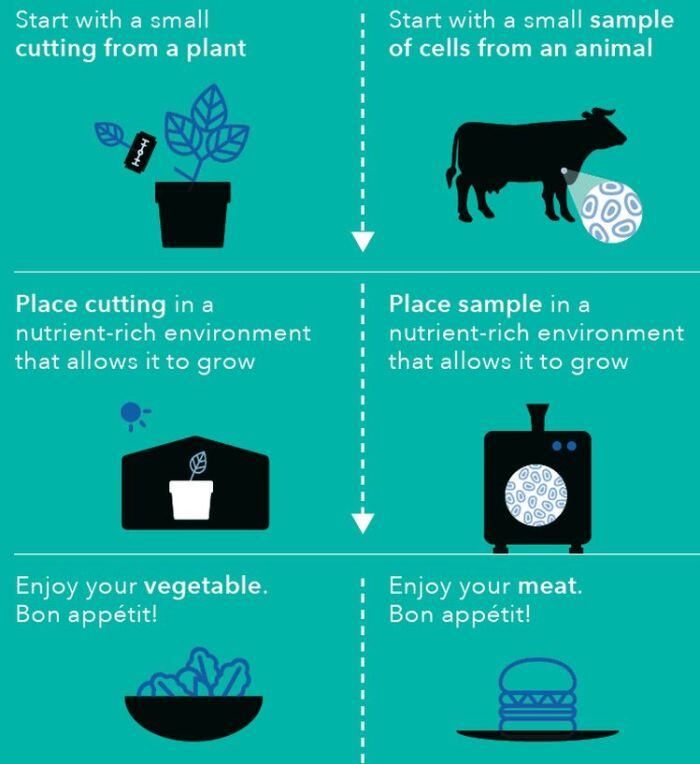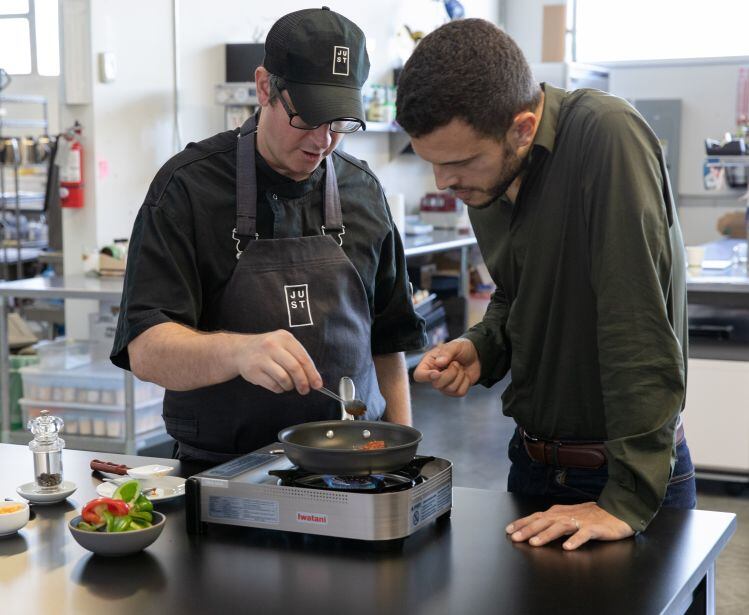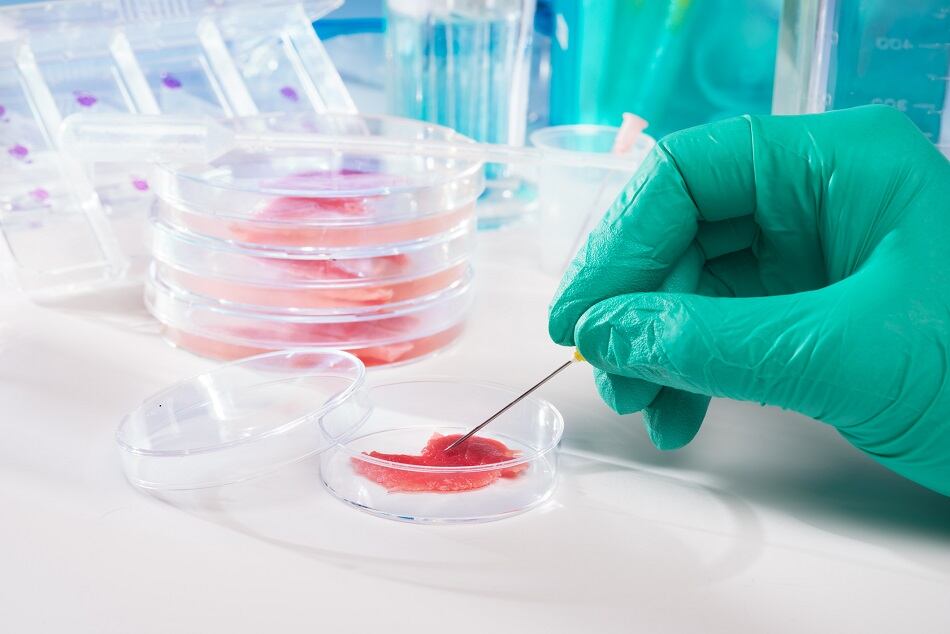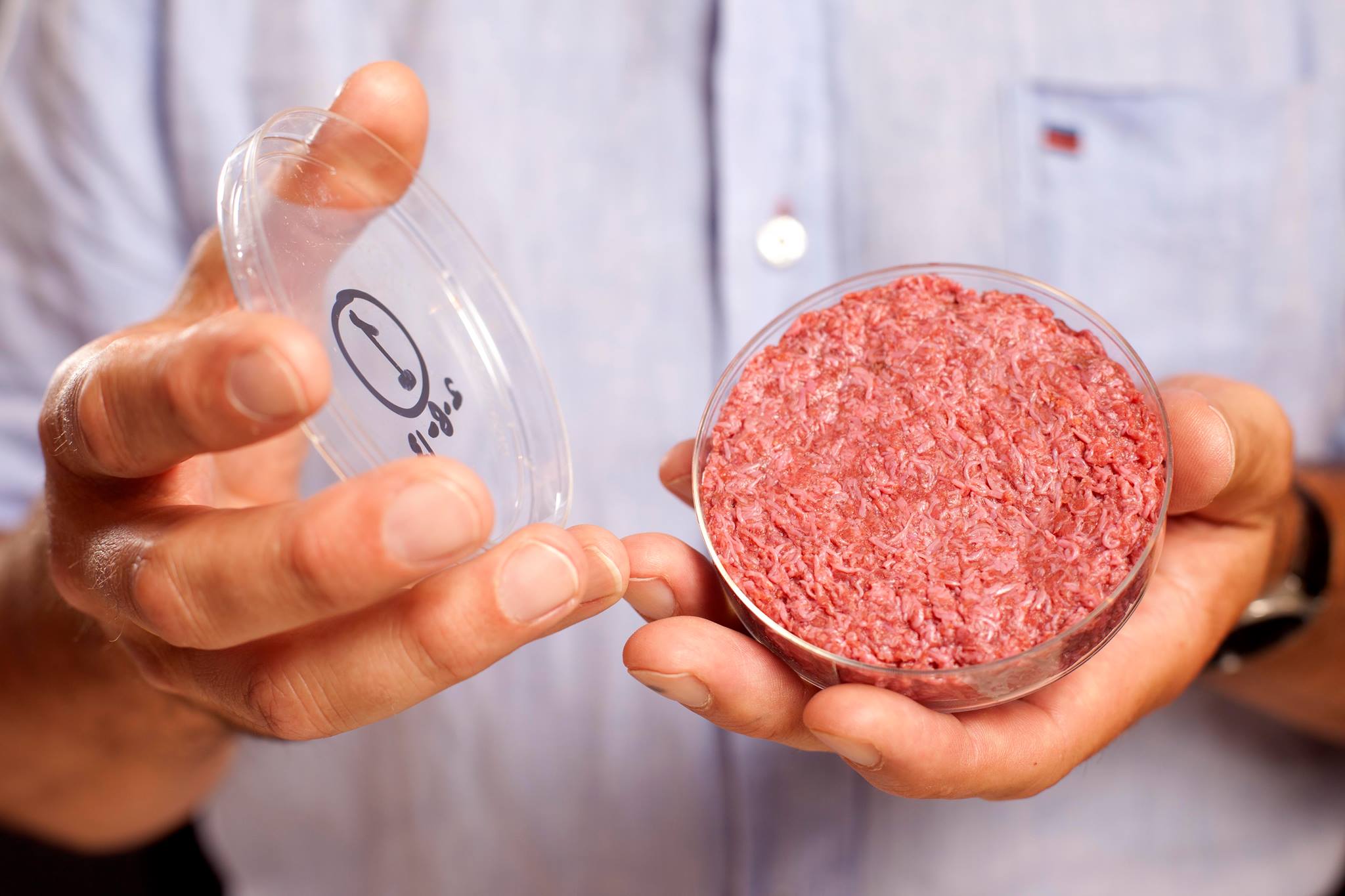Regulators will ultimately decide how companies in the nascent cell-cultured meat industry must label their wares, but over the past couple of years, stakeholders have sought to get ahead of the debate (and the ‘lab-grown’ headlines) by trying to come up with terms that might satisfy regulators and consumers without alienating the conventional meat industry.
While some key stakeholders have promoted the term ‘cell-based meat’ (a term with which the North American Meat Institute is also comfortable), this is not a winner with consumers, said Barb Stuckey, chief innovation officer at food and beverage innovation firm Mattson, which teamed up with the Good Food Institute to conduct research into the issue late last year. (Memphis Meats agreed to serve as a technical advisor.)
Earlier consumer research conducted by the GFI had already indicated that ‘cell-based meat’ did not perform well on appeal or purchase intent compared with other options (although it got high marks for descriptiveness and differentiation), said Stuckey, who said she had had a “strong hunch” from the beginning that this term would not give shoppers a warm and fuzzy feeling.
“I’ve been working in food and beverage innovation for 22 years and consumers don’t want to eat science. When you talk about cells, you leave the realm of deliciousness, which makes it very difficult to sell people on an idea.”
Building a broader narrative around ‘cultivation’
The team at Mattson and the GFI tested* a variety of names and concepts with consumers through online quantitative research and qualitative research via focus groups, and then further validated the term that tested the best: cultivated meat.
What quickly became clear as they started looking at nomenclature was that “this was about more than just coming up with a name,” added Stuckey, who said the technology was potentially so disruptive that it was important to develop a broader story or narrative to help consumers understand how to frame it.
“So we came up with a story and a visual analogy that likens the production of cultivated meat to the propagation or cultivation of plants, where you take a cutting and put it in a warm and fertile environment, grow it and harvest it. “
The term ‘cultivator’ to describe the vessels in which the cells are cultivated or grown is also more appealing than a ‘bioreactor,’ she added, noting that the experience with genetically modified crops highlighted the need to get ahead of this issue and engage with consumers early.
“We want to tell the story in a way that helps this amazing transformative technology see the light of day and not get stuck in the position that GMOs are today.”

“Growing meat without raising and slaughtering animals will be better for the consumer, animals, our environment, and our food system. We want people to be aware of the benefits of meat produced this way -- and this awareness starts with how we refer to it.
"‘Cultivated meat’ is the clearest and most descriptive way of referring to meat grown directly. As this idea turns into an industry, GFI is confident that the phrase ‘cultivated meat’ will serve consumers and companies.”
Bruce Friedrich, executive director and co-founder, The Good Food Institute
Is everyone on the same page?
While the USDA will be responsible for the labeling of cell-cultured meat and poultry products (seafood is under FDA jurisdiction) and has not yet opined on its favored term, finding a term that most players in the segment can get behind as they seek to engage with consumers before products hit the market is important, said Stuckey.
“We just need to align on something.”
So is everyone on the same page when it comes to ‘cultivated meat’ or do some cell-cultured meat startups still prefer other terms such as ‘cell-based meat’?

“We used the Good Food Conference in San Francisco last week to debut the research, so we had a private meeting last Wednesday with the startups and their investors, and we had a lot of the folks in the room saying they were on board, but not everybody, and we expected that,” said Stuckey. “And then we had an open session on Thursday.”
Memphis Meats: We will continue to use the term 'cell-based meat'
Dr Eric Schulze, VP of product and regulation at Memphis Meats, told FoodNavigator-USA that his company would continue to use the term 'cell-based meat' because the term is "factual, inclusive and neutral."
He added: "Cell-based meat communicates product composition through an accessible and consumer-friendly expression. It accurately indicates that our products are real meat, down to the level of the cell, and highlights the key differentiating factor of this product category (animal cell culture) in a neutral manner.
"Cell-based meat has been adopted by many other stakeholders in the food and agriculture space, including cell-based meat companies, industry incumbents and journalists. We believe that transparency for consumers is paramount and are committed to keeping this conversation going in a positive way, using inclusive terms."
BlueNalu: We use the terms 'cell-based seafood' and 'cellular aquaculture'
Lou Cooperhouse, president and CEO at BlueNalu, a fellow member of the new Alliance for Meat, Poultry and Seafood Innovation, added: "BlueNalu currently uses the terms 'cell-based seafood' and 'cellular aquaculture,' because both terms are scientifically accurate, transparent, and do not disparage either conventionally produced seafood or seafood produced directly from the cells of fish.
"As you know, this is an emerging field and we have a few years until product will be on the marketplace, so we remain interested in further consumer research on the topic.
"We believe ‘cultivated’ as well as ‘cell-based’ and ‘cultured’ are all positive terms that capture this emerging industry. The Alliance for Meat, Poultry and Seafood Innovation will continue to use ‘cell-based’ and ‘cultured,’ for now."
The term 'clean meat’ – coined because cell-based meat is cultured in a clean environment and because it has a lower environmental footprint (like 'clean energy') - has become more widely used in the media over the past couple of years. However, it has had some pushback, given its tacit implication that regular meat is 'dirty,’ coupled with confusion over what it means.
The term 'cell-cultured meat' scored well for descriptiveness with consumers (ie. helping to explain what it actually is), but did not score so well on appeal. (Cultured fish is also an established term in aquaculture and therefore not a viable name for fish and seafood produced from cells.)
The term 'cell-based meat' scored reasonably well for descriptiveness in the GFI/Mattson research, but did not score so well on consumer appeal.
JUST Inc CEO: Food is not a science project
Speaking during a panel debate at the Good Food Conference, Niya Gupta, CEO of Fork & Goode, a startup cultivating animal proteins and fats, said she liked the term ‘cultivated,’ while JUST Inc founder Josh Tetrick said he also preferred it to cell-based meat and cultured meat.
He added: “Food is not a science project. It’s stories, it's identity, it's culture. It’s what Grandma made. It's not software. A name is about identity, it's more than just the molecular make up of what it is. We want to be transparent, but how can you reflect the science and truth of this without scaring the hell out of the consumer?”
Ultimately, however, it will just be referred to as meat, he predicted. “No one says smartphone anymore. It’s just a phone.”

When will cell-cultured meat products come to market?
Asked when we might see cell-cultured meat products hit the market, Tetrick said JUST would launch products “more likely than not this year, or almost certainly next year” (assuming the regulatory pathway is in place), although he stressed that this would be a small scale launch.
Gupta, meanwhile, said Fork & Goode products would not come to market for two to three years.
Dr Schulze at Memphis Meats would not speculate over a release date, but told us: "The number one priority of Memphis Meats is ensuring product safety and consumer trust. A crucial component of this will be establishing a sensible regulatory framework. We are committed to using appropriate regulatory channels to provide consumers with our product.
"This may contrast with Silicon Valley’s “move fast and break things” ethos, but we firmly believe that for food companies, our product launch must be done in a responsible manner."
*Read more about the research methodology HERE.
Read a 'Guide to Terminology' from the new Alliance for Meat, Poultry and Seafood Innovation, formed by Memphis Meats, BlueNalu, Fork & Goode, Finless Foods, and JUST, Inc to educate consumers and stakeholders about the cell-cultured meat and seafood industry and advocate for a clear regulatory path forward.

- Rather than raising and slaughtering animals, we can cultivate meat.
- But we can grow the same cells in what’s known as a cultivator.
- The cultivator facilitates the same biological process that happens inside an animal by providing warmth and the basic elements needed to build muscle: water, proteins, carbohydrates, fats, vitamins, and minerals.
- Cultivating meat is similar to the way we help plant cuttings to take root in a greenhouse that provides warmth, fertile soil, water, and nutrients.
Source: Good Food Institute and Mattson (click HERE for more details)




